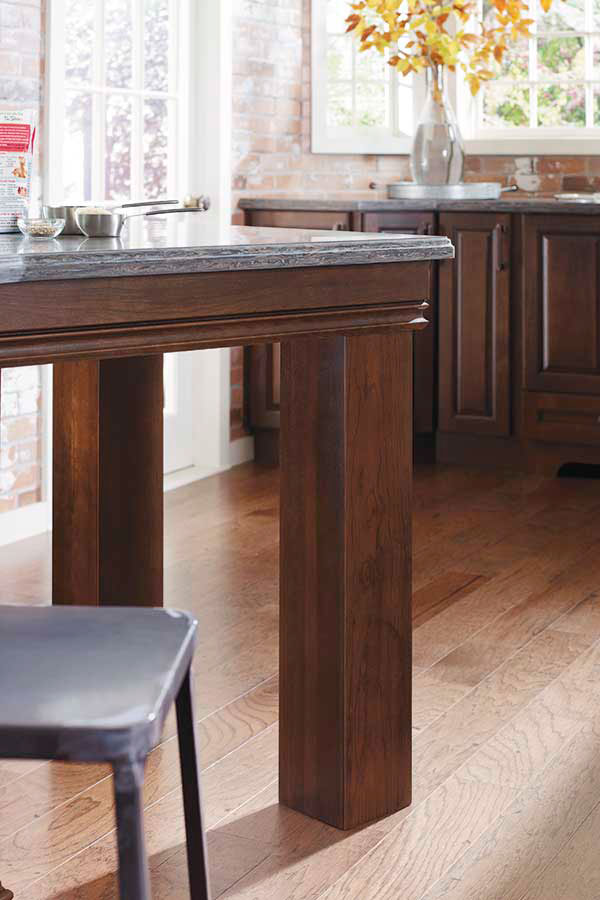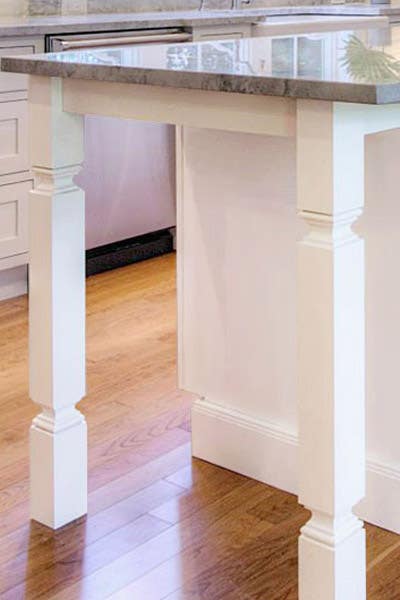Make Best Use Of Flexibility with Adjustable Legs For Kitchen Island Features
Make Best Use Of Flexibility with Adjustable Legs For Kitchen Island Features
Blog Article
Checking Out the Numerous Styles of Legs For Cooking Area Island: What You Required to Know
In the realm of kitchen layout, the selection of legs for your island is greater than a plain aesthetic choice; it substantially affects both design and usefulness. From the sleek elegance of modern-day steel to the ageless charm of standard wood, each alternative presents special benefits and design opportunities. Industrial designs can give a rugged personality, while rustic farmhouse legs stimulate a sense of warmth and practice. Furthermore, the development of special decorative legs permits for individual expression within functional furnishings. The inquiry continues to be-- how do you establish which design finest lines up with your vision?
Modern Metal Legs
Modern steel legs have ended up being a prominent choice for cooking area islands, providing both resilience and a smooth visual. These legs are commonly crafted from materials such as stainless-steel, light weight aluminum, or functioned iron, making them resistant to tear and put on, which is vital in a high-traffic area like the kitchen. Their durable building makes certain stability, accommodating the weight of hefty kitchen counters and day-to-day usage.
In enhancement to their strength, modern metal legs been available in different layouts, from minimal to industrial designs, permitting property owners to tailor their kitchen area islands to their one-of-a-kind tastes. The reflective surfaces of metal can add a modern touch, improving the total brightness of the cooking area space. Moreover, steel legs can be coupled with a large range of kitchen counter materials, balancing flawlessly with granite, quartz, or also recovered timber.
Another advantage of steel legs is their ease of upkeep; they can be merely wiped down to eliminate any kind of stains or spills, ensuring durability and sanitation. Overall, modern-day steel legs not just give structural support for kitchen area islands yet likewise add significantly to the aesthetic allure, making them a favored alternative for modern cooking area designs.
Typical Wood Legs

Standard timber legs can take various forms, including turned, tapered, or square designs. Transformed legs feature a rounded account with luxuriant describing, including a touch of beauty. Tapered legs, on the various other hand, offer an even more structured look while maintaining a standard ambiance. Square legs provide a durable look, which can create a feeling of stability and weightiness in the layout.
Moreover, timber legs can be tarnished or painted to match existing kitchen cabinetry or décor, providing customization options that boost the overall aesthetic of the kitchen. Coupling these legs with a timber countertop or other wood components can develop a natural appearance, emphasizing the warmth and character that standard timber gives cooking area islands. Therefore, conventional timber legs remain an ageless option for those seeking beauty and capability in their kitchen style.
Industrial Style Legs

The flexibility of industrial legs permits them to enhance a variety of kitchen counters, from redeemed timber to polished concrete. Their fundamental stamina makes certain sturdiness, making them suitable for heavy-duty usage. In addition, the minimalist style frequently related to commercial design legs can enhance the overall room without frustrating it.
Color options commonly vary from matte black to cleaned nickel, enabling for personalization to fit specific choices. Legs For Kitchen Island. Industrial legs can be integrated into different cooking area configurations, from open-concept spaces to a lot more small designs. This adaptability makes them an appealing choice for contemporary home owners looking for both capability and design. Inevitably, industrial design legs can change a kitchen area island right into a declaration piece, marrying kind and function in a harmonious manner.
Rustic Farmhouse Legs
Rustic farmhouse legs personify a charming mix of custom and warmth, making them a popular selection for cooking areas that look for to evoke a comfortable, inviting atmosphere. Characterized by their durable building and construction and all-natural materials, these legs often include wood with a troubled surface, showcasing the elegance of imperfections that includes age. This aesthetic not just reinforces the farmhouse style yet likewise adds personality and authenticity to the cooking area room.
Generally, rustic farmhouse legs are developed with durable, chunky profiles that supply significant support for the kitchen island. Generally crafted from recovered wood, they contribute to a sustainable design while providing a distinct tale via their diverse structures and tones. The all-natural grain patterns and knots found in these products boost the visual allure and bring a sense of nature inside.
Along with their aesthetic worth, rustic farmhouse legs can be coupled with numerous linked here tabletop materials, such as butcher block or rock, creating an unified equilibrium between rustic beauty and contemporary performance. This convenience allows Check This Out home owners to customize their kitchen islands according to individual preferences, making certain that the space remains both fashionable and sensible for day-to-day use.
Special Ornamental Legs
Often overlooked, one-of-a-kind ornamental legs can change a basic kitchen island into a statement item that mirrors private design and imagination. These legs serve not only as architectural assistances yet also as imaginative expressions that enhance the general aesthetic of the cooking area.
Offered in a range of designs, one-of-a-kind decorative legs can vary from detailed wrought iron scrollwork to frankly transformed timber patterns. For those leaning towards a much more contemporary appearance, streamlined steel legs in geometric forms can provide a minimal yet captivating allure. Reclaimed timber legs with artisanal outlining bring heat and character, lining up with lasting design principles.
Incorporating unique decorative legs right into your kitchen island permits limitless customization. Color, texture, and kind can be adjusted to integrate with existing design or to present an exciting comparison. For example, pairing a rustic wood top with sleek brass legs develops a striking juxtaposition that attracts the eye.
Ultimately, picking distinct decorative legs is a possibility to share individual preference while making sure functionality. By prioritizing both style and toughness, property owners can create a kitchen island that not just stands out but additionally serves as a useful focal point for culinary undertakings.
Conclusion
To conclude, the option of ideal legs for a cooking area island substantially affects both the practical and visual elements of the room. Modern metal legs give a streamlined appearance, while typical timber legs supply warmth and character - Legs For Kitchen Island. Industrial-style legs present an urban allure, and rustic farmhouse next page legs highlight natural charm and toughness. Unique ornamental legs serve as a means of personalization, guaranteeing that the kitchen island not only sustains practical use however likewise enhances the general style of the kitchen area.
A range of conventional wood legs can improve the appeal and heat of kitchen islands, appealing to property owners that prefer a classic visual. Coupling these legs with a timber kitchen counter or other wooden elements can produce a natural appearance, highlighting the warmth and personality that typical timber brings to kitchen area islands. Modern steel legs offer a streamlined appearance, while traditional wood legs offer warmth and character. Industrial-style legs present an urban appeal, and rustic farmhouse legs highlight natural charm and sturdiness. Distinct decorative legs offer as a means of personalization, making certain that the kitchen island not just supports practical use however likewise boosts the general design of the cooking area.
Report this page